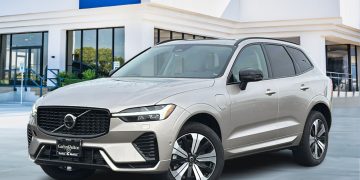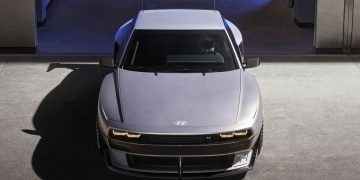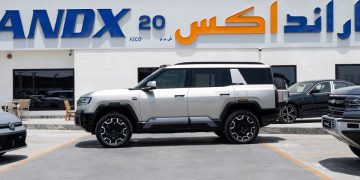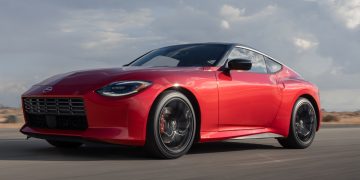As the electric vehicle (EV) market continues to grow, new energy vehicles (NEVs) have become a popular choice for environmentally conscious consumers. One of the most important factors influencing potential buyers’ decisions is the vehicle’s range—how far it can go on a single charge. The range of an NEV plays a crucial role in determining whether it is practical for daily use, long road trips, and overall convenience. Alongside range, user feedback provides valuable insights into the true performance of these vehicles after they’ve been on the road for an extended period.
In this article, we will dive deep into the range capabilities of a specific NEV, examining how it compares to other vehicles in its class. Additionally, we will explore the real-world feedback from owners who have had firsthand experience with this vehicle, shedding light on the actual performance, strengths, and challenges they face in their daily usage.
1. Introduction: The Growing Popularity of New Energy Vehicles
The shift towards new energy vehicles, primarily electric vehicles (EVs) and plug-in hybrid electric vehicles (PHEVs), is gaining momentum across the globe. Governments are offering incentives, and environmental concerns are pushing consumers to look for alternatives to traditional combustion engines. One of the most critical factors in an NEV’s success is its ability to offer a practical range that suits the needs of everyday drivers. In this article, we focus on a specific NEV model, analyzing its range, features, and the user experience it delivers.
- The Importance of Range in EVs: The range of an NEV is one of the first things potential buyers consider. It can make the difference between whether someone can use an EV for city commuting, longer trips, or whether they still need a backup car with a gasoline engine for long distances.
2. Understanding the New Energy Vehicle in Focus
Before analyzing the range and user feedback, it’s important to understand the specific vehicle being discussed. The make, model, battery size, motor type, and design features will influence how it performs in real-world driving conditions.
- Vehicle Overview: Provide a brief overview of the NEV model, including key specifications like battery capacity (kWh), range per charge (miles or kilometers), motor power (horsepower), and any other standout features such as fast charging capabilities, autonomous driving technology, or luxury features.
- Range Testing Standards: The industry standard for determining a vehicle’s range is the WLTP (Worldwide Harmonized Light Vehicles Test Procedure) or EPA (Environmental Protection Agency) testing cycle. These tests simulate various driving conditions, such as urban driving, highway driving, and mixed conditions, to estimate how far the vehicle can go on a full charge.
3. How Far Does This New Energy Vehicle Really Go?
While official figures from manufacturers are important, real-world range can vary significantly. Factors like driving style, weather, terrain, and the use of accessories (e.g., air conditioning, heating) can all impact the actual range of an NEV.
- Official Range vs. Real-World Range: The vehicle might be rated for a specific range under standard testing conditions, but how does it actually perform in everyday driving situations? For example, an NEV might be rated for 350 miles (563 km) under ideal conditions, but in colder climates or on steep terrains, the range could be lower.
- Battery Efficiency: Discuss the role of battery efficiency in determining range. Modern batteries are designed to offer maximum energy density, but real-world conditions—such as charging frequency, battery age, and ambient temperature—can affect the battery’s performance over time.
- Charging Infrastructure: Another critical aspect to consider is how easy it is to charge the NEV. The availability of charging stations, whether the vehicle supports fast charging, and how long it takes to recharge the battery all play a role in the practicality of the vehicle’s range.
4. Real-World User Feedback: What Are Owners Saying About the Range?
To get a true sense of how this NEV performs on the road, we turn to real-world owners who have been driving this vehicle for an extended period. Consumer reviews and testimonials provide valuable insights into how the range holds up in everyday use, as well as any challenges or advantages that might not be apparent from technical specifications alone.
- Positive Experiences with Range: Many NEV owners report that their vehicle’s range exceeds expectations, especially when used for city commuting or short to medium trips. Some may find that the range is more than adequate for their daily needs, with little concern about needing to recharge during the workweek.
- Challenges with Range in Certain Conditions: On the flip side, some users experience a decrease in range in certain conditions. Cold weather, heavy traffic, and the use of climate control systems (heating and cooling) are all factors that can reduce the overall range. Additionally, drivers who frequently take long trips might find themselves needing to charge more often than expected, especially if charging stations aren’t readily available on their route.
- Battery Degradation: Over time, like any other battery-powered device, the battery in an NEV will degrade. While the early models of EVs had concerns about substantial degradation after several years, newer models tend to have better battery management systems that limit this issue. However, real users still report minor range reductions after several years of ownership, which is important to consider.
- User Tips for Maximizing Range: Many owners offer advice based on their experience with maximizing the NEV’s range, such as driving at moderate speeds, reducing heavy acceleration, and using regenerative braking to recharge the battery while driving. Additionally, planning routes around charging station locations and utilizing home charging options can ensure that the vehicle stays fully charged.

5. The Role of Technology and Innovation in Improving Range
Innovation is key to improving the range of new energy vehicles, and manufacturers are continually working to optimize battery technology, aerodynamics, and motor efficiency.
- Battery Technology Advances: New battery chemistries, such as solid-state batteries, promise to deliver more energy at a lower weight, potentially increasing the vehicle’s range without increasing the size of the battery. Discuss how technological advancements could affect future models in terms of range and performance.
- Regenerative Braking Systems: Many electric vehicles utilize regenerative braking to recover energy and extend range. This system captures energy that would otherwise be lost when braking and converts it into electricity to recharge the battery.
- Software Updates and Range Improvements: With many new energy vehicles being equipped with sophisticated software, manufacturers are able to push over-the-air updates that optimize the car’s battery management system, improving its efficiency and range over time.
- Charging Technology: Fast-charging technology is evolving, reducing the time it takes to recharge an EV and making longer trips more feasible. Some new EVs support ultra-fast charging, which allows drivers to charge their vehicle up to 80% in less than 30 minutes.
6. Comparison to Other Vehicles in the Market
How does this NEV stack up against others in its class? There are many new energy vehicles available, each offering varying ranges, features, and performance levels.
- Range Comparisons: Compare the range of the featured NEV to other electric vehicles in the same category—such as sedans, SUVs, or compact cars. Highlight how this model fares in terms of range per charge, charging time, and overall efficiency.
- User Experience in the Competitive Landscape: Provide feedback from users who have driven different electric models and share their comparison of the range, comfort, and convenience offered by the featured vehicle versus others in the market.
7. Conclusion: Is the Range of This New Energy Vehicle Enough for You?
The range of a new energy vehicle is one of the most important factors when considering whether it will meet your needs. While official range figures provide a solid starting point, real-world usage can differ significantly. By examining user feedback and looking at how this vehicle performs under various conditions, you can better determine if its range is suitable for your lifestyle. Furthermore, with the rapid advancements in battery technology, charging infrastructure, and vehicle software, the driving experience is continuously improving, making NEVs an increasingly practical and desirable option for consumers.
Ultimately, whether the range of this NEV is sufficient depends on your personal driving habits and how well the vehicle integrates into your lifestyle. For many drivers, the benefits of driving an environmentally friendly vehicle, combined with improved charging options, outweigh any range limitations.


































Discussion about this post